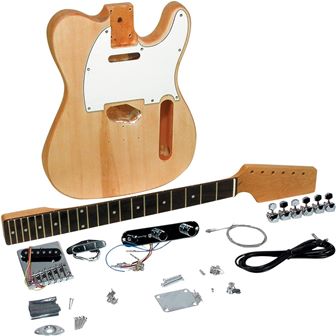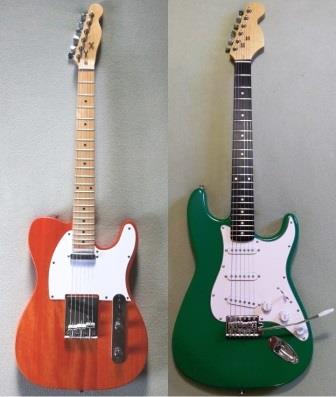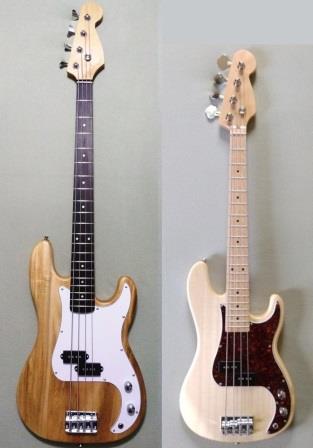
Identifying your skill level is the first step to picking the right DIY electric guitar kit. For beginners, simpler kits with pre-drilled holes and pre-wired electronics can make the process less overwhelming. Advanced builders might enjoy more complex kits that allow for greater customization and challenge.
Your musical style plays a big role in choosing your kit. If you’re into heavy rock or metal, a guitar with humbucker pickups might be more suitable. For blues or jazz enthusiasts, single-coil pickups can offer the clean tones you need. Think about the genres you love to play and let that guide your choice. Being a bass player, I’ve built a variety of different bass kits.
Evaluating the quality of the components in the kit is essential. Cheaper kits might use lower quality components, but can often be upgraded later. Look for kits that include a style you will be happy with, a wood you can finish to your liking, and the pickup type that gives you the sound you want. This ensures your guitar won’t just look good, but sound great too.
Customization options can really set your build apart. Some kits offer more options for customizing the shape, color, and hardware. If personalizing your instrument is important to you, seek out kits that allow for these modifications. This way, you’ll end up with a unique guitar that truly reflects your style.
Key Features to Prioritize in a DIY Electric Guitar Kit
Choosing the right wood for the body and neck is crucial. Various mahogany species, basswood, paulownia, and ash are popular choices, each offering unique tonal qualities. The wood affects not only the sound but also the finish. For instance, ash wood is great if you prefer a grainy, natural look, while maple can give a smoother finish.
My personal favorite is mahogany, and I’ve become pretty proficient at dying or staining it. Flamed or quilted maple veneers are also popular. Of all the things I’ve tried, basswood (though popular) is my least favorite. As for necks, maple is by far the most common, though many mahogany kits with a set neck will also use a mahogany neck, making the finished look much more consistent.
The pickups in the kit determine the guitar’s sound output. Humbuckers are known for their thick, heavy tone, ideal for rock and metal. Single-coil pickups deliver bright and clear sounds, perfect for blues and jazz. It’s important to pick a kit that includes pickups best suited to your music style.
Cheap hardware might need frequent replacements, costing you more in the long run. Compatibility with upgraded components is a significant consideration. Look for kits that allow for easy upgrades down the road. Whether you want to swap out pickups, change the bridge, or upgrade the tuners, ensure the kit supports these modifications seamlessly.
Shopping for DIY Electric Guitar Kits: Why Amazon is a Top Option
Amazon offers a wide variety of brands, making it easy to find a kit that suits your specific needs and budget. From well-known manufacturers to niche companies, there’s something for everyone, whether you’re a beginner or an advanced builder.
Competitive prices on Amazon are another big draw. Thanks to numerous sellers, you can often find great deals and discounts that might not be available elsewhere. This means you can get a high-quality kit without breaking the bank. Be sure to check the Amazon Warehouse for kits that have been returned and are sold at a discount.
Click to look for deals on DIY Electric Guitar Kits in the Amazon WarehouseHere you can see a few of my DIY Electric Guitar Kits from Amazon: my Leo Jaymz Tele kit (mahogany), my Fistrock Strat kit (basswood), my Fistrock P-Bass (paulownia) and my Solo Mini P-Bass (basswood).


User reviews and ratings on Amazon provide valuable insights. These reviews often include tips and information about the build process, component quality, and overall satisfaction from others who’ve purchased the same kit. This feedback can be extremely helpful in making an informed decision.
Amazon’s return policies add a layer of security to your purchase. If a kit arrives with missing parts or doesn’t meet your expectations, returns and exchanges are usually straightforward. This peace of mind can make the buying process less stressful and more enjoyable.
Ensuring Your DIY Electric Guitar Kit Meets Your Long-Term Needs
Planning for future upgrades is key. Even if you start simple, picking a kit that allows for easy modifications down the line can save money and effort. Look for kits with standard dimensions and components that can be swapped out easily.
Playability and comfort shouldn’t be overlooked. A guitar that feels good in your hands and is easy to play will keep you motivated to practice and improve. Pay attention to the neck shape and body weight of the kit, as these can significantly affect comfort.
Balancing cost and quality is tricky but important. While it’s tempting to go for the cheapest option, investing in a slightly more expensive kit can often mean better materials and components. This can lead to a guitar that not only sounds better but also lasts longer.
Checking for comprehensive instructions and support materials can make your building experience smoother. Detailed manuals, video tutorials, and active online communities can provide the guidance you need to successfully complete your build and troubleshoot any issues along the way.